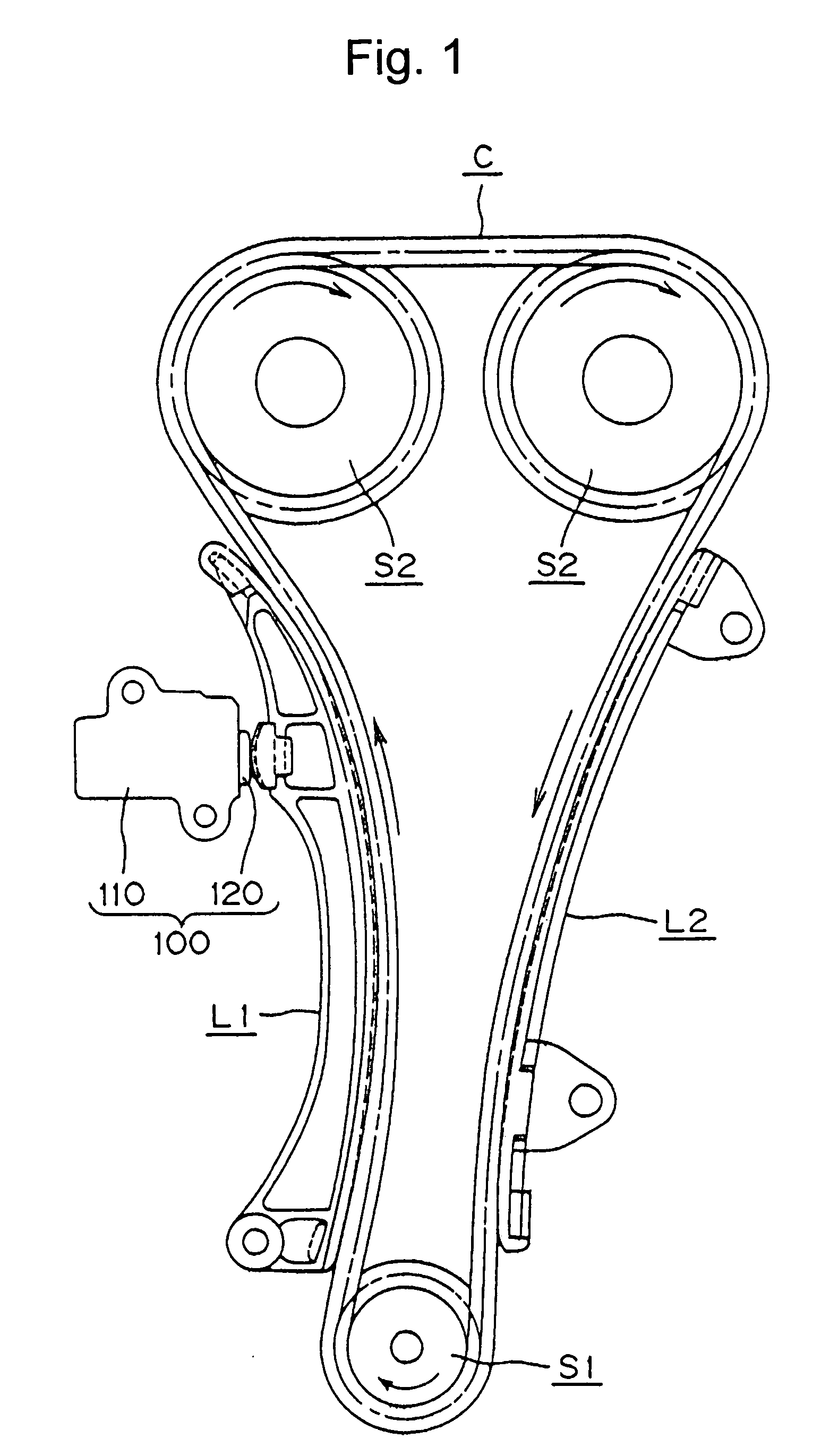Hydraulic tensioner
a technology of hydraulic tensioner and tensioner body, which is applied in the direction of mechanical equipment, belts/chains/gearrings, and mechanical equipment, etc., can solve the problems of high manufacturing cost and difficult assembly of tensioners, and achieve the effect of reducing risk, facilitating press fitting, and suppressing backlash and flutter
- Summary
- Abstract
- Description
- Claims
- Application Information
AI Technical Summary
Benefits of technology
Problems solved by technology
Method used
Image
Examples
second embodiment
[0046] The tensioner 200 in accordance with a second embodiment the invention is shown in FIG. 7. This tensioner differs from the tensioner previously described principally in that it includes a plunger-biasing structure 230 comprising an outer spring 231, and an inner spring 232. The outer spring abuts a retainer 243 in a check valve unit 240, and a ball guide 252 in a deairing valve unit 250. The inner spring 232 is coaxial with, and disposed inside, the outer spring. The inner spring abuts retainer 243 of the check valve unit 240 and a retainer 253 of the deairing valve unit. Otherwise, the configuration of the hydraulic tensioner 200 is substantially the same as that of hydraulic tensioner 100. Elements of tensioner 200 shown in FIG. 7 corresponding to those of tensioner 100 are denoted by corresponding reference numbers in the two hundred series.
[0047] Since the hydraulic tensioner 200 includes an outer spring 231 and an inner spring 232 arranged coaxially, even if the plunger ...
third embodiment
[0049] The tensioner 300 in accordance with a third embodiment the invention is shown in FIG. 8. This tensioner is similar to the dual spring tensioner 200 of FIG. 7, but differs from tensioner 200 in that the plunger is provided with a ratchet mechanism which blocks the backward movement of the plunger 320 by engagement between a rack 323 formed on the plunger 320 and a pawl 360 pivoted on the housing 310. Otherwise the tensioner 300 is substantially similar to the tensioner 200 of FIG. 7, and elements of tensioner 300, shown in FIG. 8, corresponding to those of tensioner 200, shown in FIG. 7, are denoted by corresponding reference numbers in the three hundred series.
[0050] As in the case of tensioner 200, if the plunger 320 is moved backward rapidly by an excessively large increase in tension, the springs 331 and 332 exhibit a sufficient elastic force to resist the impact, so that a backlash and fluttering are significantly suppressed. The ratchet mechanism limits backward movemen...
PUM
 Login to View More
Login to View More Abstract
Description
Claims
Application Information
 Login to View More
Login to View More - R&D
- Intellectual Property
- Life Sciences
- Materials
- Tech Scout
- Unparalleled Data Quality
- Higher Quality Content
- 60% Fewer Hallucinations
Browse by: Latest US Patents, China's latest patents, Technical Efficacy Thesaurus, Application Domain, Technology Topic, Popular Technical Reports.
© 2025 PatSnap. All rights reserved.Legal|Privacy policy|Modern Slavery Act Transparency Statement|Sitemap|About US| Contact US: help@patsnap.com



